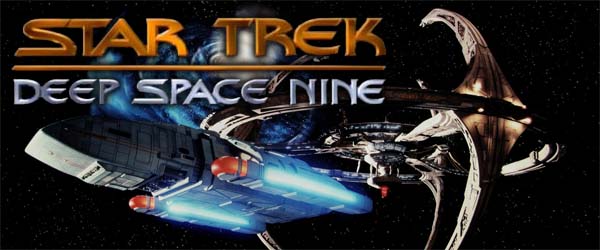
After posting 2 essays about how Deep Space Nine realizes the ideals of Star Trek and how it was ahead of its time, I would feel remiss if I concluded any discussion of the greatness of Star Trek Deep Space Nine without praising its outstanding cast of recurring guest actors and characters. Seriously, DS9's recurring guest characters are some of the true highlights of the entire show. Their natural charisma as performers is bolstered by the show's fundamental structure as a serialized story, and its setting on a stationary outpost. These two decisions in the design and production of the show allow guest characters to recur frequently, with their own storylines and arcs, and helps make them just as vital to the plot of the show as any of the main cast.
As mentioned previously, Deep Space Nine wasn't a starship like the Enterprise. It didn't have the luxury of sailing off into the sunset at the conclusion of every episode, leaving the people and problems of the episode behind. The crew of Deep Space Nine were stuck dealing with the long-term fallout of the events of any particular episode, and that included the circumstances of characters in the station's immediate neighborhood. Some of these characters come and go, leaving Deep Space Nine behind forever. But others become permanent fixtures on the show, almost as much a part of the main cast as Armin Shimerman or Andrew Robinson.
Being a stationary starbase, a diverse collection of guest characters repeatedly visit Deep Space 9.
The following post will discuss specific plot points regarding multiple guest characters, including some who don't appear until the later seasons of the series. As such, this post will have the most explicit story spoilers of any of these 3 Deep Space Nine retrospectives. Read on at your own risk.
Star Trek's best villain(s)
The highlight of Deep Space Nine's guest cast is its principle villain, the best villain in all of Star Trek: Gul Dukat.
Yes, you read that right. Dukat is Trek's best bad guy.
Dukat is better than Khan. Better than General Chang (but only barely). Better than the Borg (and their stupid queen). Certainly better than the Duras Sisters or any of Trek's rogues gallery of throwaway villains like Commander Kruge. He's better even than Q -- if you want to consider Q a "villain" to begin with.
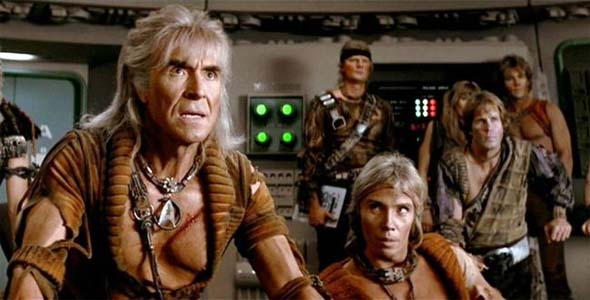 - Star Trek II: The Wrath of Khan, copyright Paramount Pictures.
- Star Trek II: The Wrath of Khan, copyright Paramount Pictures.
Sorry Khan, I do not think you are Star Trek's best villain. You're 2nd place, at best.
Yes, Dukat is my favorite Trek villain -- by a long shot. It's not even close. [More]
a258d721-4fc4-450e-b1ec-e89bbfc5cfb3|0|.0
Tags:Star Trek, Star Trek: Deep Space Nine, Deep Space Nine, space station, demagogue, Quark, Armin Shimerman, Garak, Andrew Robinson, Gul Dukat, Marc Alaimo, Kai Winn, Louise Fletcher, Weyoun, Grand Liquidator Brunt, Shran, Jeffrey Combs, Rom, Max Grodénchik, Nog, Aron Eisenberg, Grand Nagus Zek, Wallace Shawn, Ishka, Moogie, General Martok, J.G. Hertzler, Ziyal, Damar, Michael Eddington, Kenneth Marshall, Agent Sloan, Section 31, Vic Fontaine, Ezri Dax, Nicole de Boer

In the age of streaming and binge-watching here in the year 2023, long-form serialized television is now ubiquitous. Every network and streaming service has wanted its own blockbuster TV shows. Whether it's AMC's The Walking Dead and Breaking Bad, HBO's Game of Thrones, Sci-Fi's Battlestar Galactica, Netflix's House of Cards and Stranger Things, History's Vikings, and so forth, it seems that every big new show outside of sit-coms has a heavily-serialized format. Procedural dramas are going the way of the dinosaur.
Serialized, long-form television may be commonplace now, but back in the 1990's, it was virtually unheard of outside of daytime soap operas (such as Dallas and Dynasty) and the occasional network mini-series. At least, this was the case in the United States. British television has a much longer track record of serialized story-telling. A big part of why serialized television was uncommon was that the producer(s) of network syndicacted shows didn't have as much control over when its affiliates decided to air the shows, or how heavily they would market and advertise it. Furthermore, the networks or affiliates could change the time slot of the show pretty much at a whim. Viewership, therefore, would be much more fickle and fractured. Audiences would pop in and drop out. Expecting the audience to have seen every previous episode in preparation for this week's episode was a dangerous and risky expectation for a production studio. It's easy to lose viewers if none of them know what's going on.
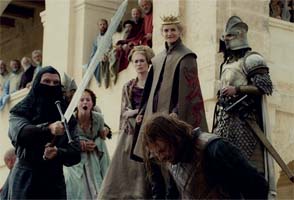 - Game Of Thrones, copyright HBO
- Game Of Thrones, copyright HBO
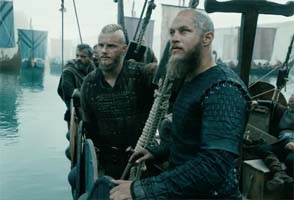 - Vikings, copyright History Channel
- Vikings, copyright History Channel
Highly serialized, long-form drama are the norm for modern networks and subscription television services.
As I mentioned in the previous essay, this was the case with me. I was in elementary school and middle school during DS9's run, and I missed a lot of episodes in the first couple seasons, despite wanting to watch the show. Missing so many episodes meant that I had very little idea what was going on when I would watch, and so I mostly lost interest in the show. If my dad was watching it, and I was there, I'd watch it, but I wasn't planning my day around it.
Looking back now, that sort of serialized story-telling is now ubiquitous and expected, and so it's easier to recognize that Deep Space Nine was truly innovative and ahead of its time in this regard.
Long-form story-telling
Serialized story-telling wasn't alien to Star Trek. Deep Space Nine premiered in 1993, the same year as the sixth season of Next Generation. By this time, The Next Generation had several story threads that had recurred over the course of a season, or over multiple seasons -- as well as several attempted overarching plot threads that were dropped.
As early as the first season of Next Generation, Q had become a recurring antagonist, and his "judgement" over the human race was established as a recurring plot thread. Heck Q's judgement of humanity was originally depicted as the framing mechanism for the entire show! It was scaled back in the following seasons due to the general poor reception of the first season, and the fact that John de Lancie just works better in a more whimsical and comic role.
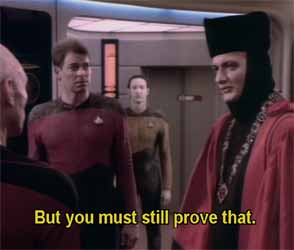 - TNG "Encounter At Farpoint", season 1, episode 1
- TNG "Encounter At Farpoint", season 1, episode 1
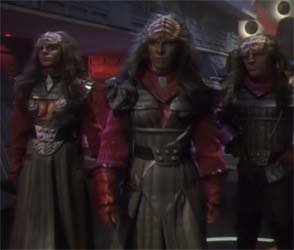 - TNG "Redemption, Part I", season 4, episode 26
- TNG "Redemption, Part I", season 4, episode 26
TNG had several recurring plot threads.
The final two episodes of Next Generation's first season, "Conspiracy" and "The Neutral Zone", seem to have been part of an abandoned attempt at more long-form story-telling. Both seem to be trying to establish some new threat to the Federation (and possibly a shared threat between the Federation and other rival powers such as the Romulans). I think the original idea was for this to become an overarching storyline for the entire series. But the thread from "Conspiracy" was completely dropped, and the destroyed colonies referenced in "The Neutral Zone" were re-written to be retroactive foreshadowing of the Borg's appearance in season 2.
[More]
cddb26c9-ca5a-4327-b199-d0d00dec522b|0|.0
Tags:Star Trek, Star Trek: Deep Space Nine, Federation, Starfleet, progressivism, humanism, secularism, religion, fundamentalism, fascism, terrorism, war, trans-gender, Worf, Odo, Quark, Moogie, Ishka, Bajor, Dominion, Founder, Changeling, Jem'Hadar, Cardassian, streaming television, Game of Thrones, Battlestar Galactica, the X-Files, Babylon 5, Buffy the Vampire Slayer, The Sopranos, Lost, Twin Peaks

The Next Generation, Deep Space Nine, and (depending on who you talk to) Voyager are widely regarded as the "Golden Age" of Star Trek. Since many Trekkies look back at this time period of the late 80's and 90's with the rose-tinted glasses of nostalgia, it might surprise you to read that Deep Space Nine used to be a highly divisive topic among Star Trek fans. Even to this day, I've talked to "hardcore" Trek purists who dislike Deep Space Nine because of how dark and conflict-driven the series is. I can't imagine what these people must think of the Kelvin-verse reboots, Star Trek: Discovery, or Picard. If you think I'm hard on those recent iterations of Star Trek, then you should talk to these people!
In any case, the idea that DS9 is too dark and conflict-driven is a valid criticism from someone coming from the perspective of a fan of The Original Series and Next Generation. Both of those shows were about an idealistic future in which humanity had grown out of its petty squabbles and now seeks to better itself through cooperative exploration and colonization of space. Deep Space Nine didn't quite accept those ideas at face-value. Deep Space Nine's more pragmatic approach had some fans believing that Deep Space Nine violated the spirit of Star Trek.
Many fans of The Original Series and Next Generation criticized Deep Space 9 for being "too dark".
Deep Space Nine was also the first Trek series to be highly serialized, having a singular, overarching plot throughout most of the series, and with frequent mini-arcs running for half a season or a whole season. TNG had its share of recurrent story arcs. Q's "trial of humanity" was pitched as a framing mechanism for the entire show, but ended up only serving to bookend the series, while relegating most of Q's appearances each season as comic tangents. There were other recurrent sub-plots as well, such as Worf's discommendation from the Klingon Empire and his conflict with the Duras House in the "Sins of the Father" arc, the Borg story thread, Data's relationship with his brother Lore, Wesley's training as a Starfleet officer, and a few others. But TNG stayed mostly episodic. Almost all the single episodes of TNG (and the two-parters as a whole) can be enjoyed independently, without having seen any previous episodes of TNG. That was not the case with DS9.
I missed many episodes of DS9 because
it aired on weekend evenings.
DS9 was on the air throughout my elementary school and middle school years (I was seven when the show premiered). It frequently aired (syndicated on Fox in my region) on weekend evenings, and I was often outside playing tag, riding bikes, or playing touch football or street basketball with neighbor kids. As such, I missed a lot of episodes. Due to the highly-serialized nature of the show, when I would see an episode, I would have no idea what was going on! Because I rarely watched the show, and didn't understand it when I did see it, I didn't particularly like it. I'd still watch it, because it was still Star Trek. In fact, Voyager was the first Star Trek series that I watched regularly (it being on Wednesday nights, when I wasn't outside playing), and, well, you all know how I feel about Voyager.
In fact, I grew up with a bit of a preconceived notion that Deep Space Nine was the "bad" Star Trek series -- even though critics at the time largely appreciated it. On the off chance that I could talk about Star Trek with a peer, they generally didn't like DS9 either -- for many of the same reasons.
It wasn't until my college years, when the show was released for sale on DVD that I sat down and watched the whole series from start to finish. At first, I wasn't even sure if I wanted to bother buying the DVDs. After all, DS9 was "the bad Star Trek". So why spend the money? And those DVDs cost a lot of money! CBS wanted something like $120 for a single season, compared to $30 or $40 a season for shows like E.R. or Grey's Anatomy. At least the Next Gen DVDs came in fancy, sturdy boxes. The DS9 DVDs came in cheap, flimsy, rigid plastic booklets that start to fall apart as soon as you open them. I think my mom bought them from Costco for $90 a pop -- a considerable discount, but still obnoxiously expensive!
CBS wanted $120 per season for DS9 DVDs!
I was now older. I was coming to terms with my personal identity as a progressive secular humanist. Most importantly, I could finally follow along with the various multi-episode story threads and the complex, nuanced characterizations. And boy, did my opinions on the series change!
I'll always have a soft spot for Next Generation. That show has my favorite Trek character: Data. And Picard is probably my third favorite character after Spock. After my single favorite episode of Trek, the Original Series' "Balance of Terror", most of my runner-up favorite episodes are TNG episodes. Episodes like "The Measure of a Man", "Who Watches the Watchers", "The Offspring", "The Best of Both Worlds", "Deja Q", "I, Borg", "Tapestry", "The Inner Light", "Darmok", "All Good Things...", and so on...
Despite my fondness for Next Generation, I actually think that Deep Space Nine is the better all-around show.
Every Trek series since the original has taken a couple years to really find its footing. TNG doesn't really figure itself out until midway through season 2, and Voyager takes until the 4th season to figure itself out -- if ever. I don't know if Discovery ever righted its ship, since I didn't bother to watch past the first season, and Picard didn't even become watchable until the third season. I feel like DS9 finds its footing much earlier than TNG or Voyager. Deep Space Nine's characters, themes, and stories start to fall in place by the end of season 1. In fact, one of my favorite episodes of the entire series (and one of my favorite episodes of Trek in general) is a season 1 episode: "Duet". DS9 is the only Trek series (since the original) for which one of my favorite episodes comes as early as the first season.
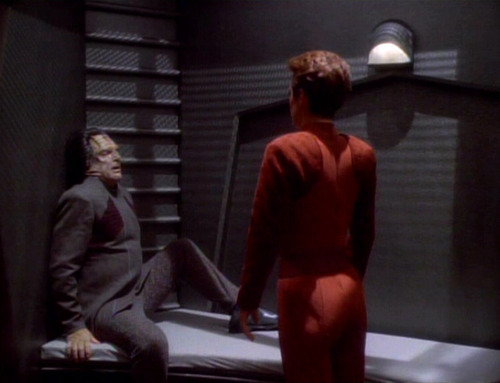 - DS9 "Duet", season 1, episode 19
- DS9 "Duet", season 1, episode 19
One of my favorite DS9 episodes (and Trek episodes in general) is the season 1 Holocaust allegory, "Duet".
The last episode of season 1, "In the Hands of the Prophets" starts to set up the season-long arcs (and a series-long arc) that would become a trademark of the series. That episode introduces us to recurring villain Vedek Winn and starts the process of her gradual accumulation of power, which we'll talk about later.
But despite the series coming together better in the first season, critics of Deep Space Nine aren't wrong when they say that it "feels different" from the Original Series or Next Generation. The show is unarguably darker and more conflict-driven. The entire second half of the series is about an interstellar war, and the seasons leading up to that repeatedly tell stories about domestic terrorism, Holocaust allegories, religious persecution, and cynical politics. These sorts of themes were present in episodes of TOS and TNG here and there, but DS9, at a fundamental level, was about these difficult topics.
[More]
79b833d8-97bd-4e2f-b45e-9f666db1588a|1|5.0
Tags:Star Trek, Star Trek: Deep Space Nine, Gene Roddenberry, Federation, Starfleet, culture, ideals, cooperation, socialism, post-scarcity economics, alien, multi-culturalism, progressivism, humanism, secularism, terrorism, war, Benjamin Sisko, Kasidy Yates, Odo, Quark, Ferengi, Klingon, Cardassian, Dominion, Bajor
A video retrospective of the last few years' of Cities: Skylines expansions and DLC is on YouTube.
I recently published a new video essay to my YouTube channel about the last few years' worth of expansions and DLC for Cities: Skylines. I will not transcribe the entire essay here, since most of what is in the essay has already been presented in my various reviews of the relevant expansions and DLC. This video features my impressions of the Campus, Sunset Harbor, Airports, Plazas & Promenades, and Hotels " Retreats expansions, as well as the World Tour DLCs (including the Financial Districts mini-DLC and content creator packs).
In summary, while most of these expansions were even more limited in scope than the earlier Cities: Skylines expansions, they started to show some signs that Colossal Order was starting to address some of my long-standing complaints and criticisms with the earlier expansions. Most notably, the newer expansions started to back-port new features and mechanics into the older expansions, such as adding new buildings if players have other expansions installed, or adding new mixed-use transit options that combine transit methods in the new expansions with transit options found in old expansions. It's a lot of subtle stuff, but it goes a long way towards making all the expansions feel more robust and homogenized.
In addition, the newer expansions and content creator packs started introducing assets that I had been asking for for a very long time. These include native parking lots and garages, sports parks such as baseball diamonds and football fields, and new sports stadiums. Sadly, we still don't have public beaches, water parks, or golf courses.
These subtle changes to the way that the expansions also expand other expansions has me very excited and optimistic that Cities: Skylines II will learn lessons from the original game's expansions' faults, and will offer much more robust and complete expansions. [More]
3d066878-8bea-4b2b-9fa2-9e1a9cfbe25f|0|.0
Tags:Cities: Skylines, Cities: Skylines 2, Colossal Order, Paradox Interactive, expansion, Cities: Skylines: Campus, Cities: Skylines: Sunset Harbor, Cities: Skylines: Airports, Cities: Skylines: Plazas and Promenades, Cities: Skylines: Hotels and Retreats, YouTube, Patreon
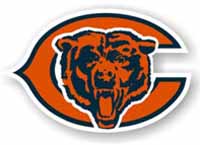
The performance of the Bears' offense in 2023's preseason has softened a lot of my hope and excitement about the upcoming season. I was hoping for a major turn around, and for the Bears to be playoff contenders in a relatively weak NFC North. But now, I'm not so sure. I doubt we'll see a completely pathetic flop of a season like last year, in which the Bears earned the number 1 overall draft pick. But I now see a winning season as more of a stretch.
Put simply, the Bears' offense showed a lot of explosive promise in its 3 preseason games, but it didn't really show a lot of general competence. Justin Fields went 3 of 3 for 129 yards and 2 TDs in the preseason opener, with TD passes to DJ Moore and Khalil Herbert. But both of those touchdowns (and the vast majority of those yards) came from Moore and Herbert breaking screen passes behind the line, and running halfway across the field for scores. It was all Moore and Herbert; not Fields. All in all, a lot of the rest of the Bears' preseason play showed a lot of the same struggles that we saw last year.
Protection didn't last very long, and Fields had to run on multiple occasions, and also took a few hits. Neither the run game, nor the pass game, looked particularly efficient, and the first team offense saw multiple 3-and-outs. But worst of all, the injury bug has already taken a toll. Both guards, Teven Jenkins and rookie Darnell Wright, missed games with injuries. Jenkins has already shown himself to be injury-prone, and now it looks like Wright might have problems with injuries as well. Both players are being evaluated on a day-by-day or week-to-week basis, so it's possible they will both be ready for the regular season opener in 2 weeks. But even if they are healthy in the opener, how long with that health last?
Dante Pettis, the presumptive punt returner, has also already been placed on injured reserve. So it looks like Velus Jones and/or rookie Tyler Scott will be competing for that job. Jones didn't play much in the preseason due to his own injury, and Scott got plenty of reps at returning punts. He didn't have much of an opportunity to show what he can do in that role, however, since few (if any) of the punts he fielded were returnable. But the important thing is that he held onto the ball. He did have a big kick return in the final preseason game against the Bills, in which a shoe-string trip-up from the kicker was the only thing that kept him out of the endzone. Another sign of potential explosiveness.
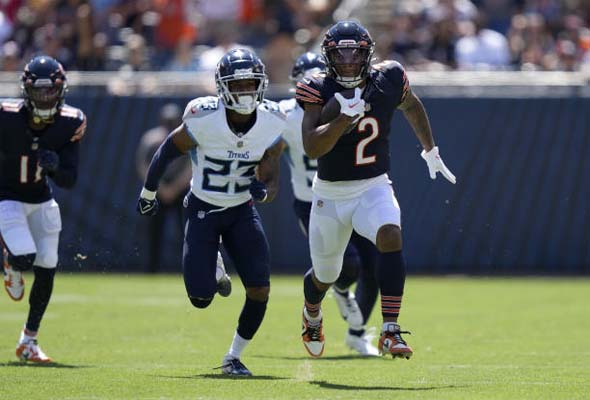 Photo credit: Charles REx Arbogast, AP
Photo credit: Charles REx Arbogast, AP
D.J. Moore and others showed explosive potential in the preseason.
[More]
62d056b1-d010-40cb-9454-295bf4e6917b|0|.0
Tags:Chicago Bears, football, preseason, Matt Eberflus, Justin Fields, Tyson Bagent, DJ Moore, Roschon Johnson, Khalil Herbert, Teven Jenkins, Darnell Wright, Tyler Scott, injury
|

| 12 | | | | | | | 60 | | 11 | | | | | | | 55 | | 10 | | | | | | | 50 | | 09 | | | | | | | 45 | | 08 | | | | | | | 40 | | 07 | | | | | | | 35 | | 06 | | | | | | | 30 | | 05 | | | | | | | 25 | | 04 | | | | | | | 20 | | 03 | | | | | | | 15 | | 02 | | | | | | | 10 | | 01 | | | | | | | 05 |
|